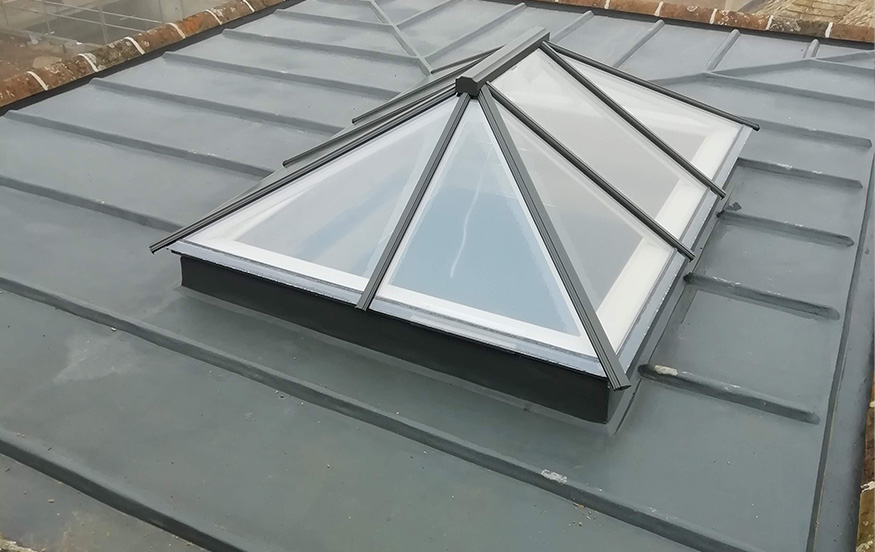Although mastic asphalt is one of the world’s oldest and most traditional roofing materials, it can sometimes be wrongly perceivedby specifiers and clients as a one-dimensional waterproofing product that is only available in a standard black finish. But like many long-lasting, tried and tested materials, mastic asphalt is being re-imagined, modified and re-examined as a highly relevant building material for today.
A project carried out by Oxford Asphalt, a member of the Mastic Asphalt Council (MAC) for over 20 years, certainly illustrates this. A roofing system was required for a private residence near Witney in Oxfordshire and the architect concerned was seeking a roofing material that had the general appearance of lead, but with a seamless finish. Metal theft is one of the fastest growing crimes in the UK and both the architect and building owner wanted to avoid the prospect of lead being stolen from the roof.
A seam-free system would ensure that there was no threat of water penetration through any joints, laps or seams and it would also ensure that the roofing system could be easily spot repaired if need be, eliminating the need for costly wholesale replacement. The main contractor for the project was Midland Builders.
Terry Grandi, Director of Oxford Asphalt said: “This project was different to the norm as the client wanted the roof to look like lead and have the seamless look of lead, but not be constructed in lead. The architect didn’t want to use felt or a single ply roofing system, so we offered the option of mastic asphalt with a colour reflective coating on top to mimic the appearance of lead. As mastic asphalt has no scrap or resale value, it is not targeted by thieves so the threat of anytheft would be eradicated.
“In order that the client could visualise how the system would look, we made a mock-up model to show them the versatility and seamless possibilities of mastic asphalt. They were very impressed when they saw it and on this basis, mastic asphalt was specified,” he continued.
The mastic asphalt system was made up of a vapour control layer, 140mm rigid board insulation, mastic asphalt waterproofingand a coloured reflective coating finish to match the appearance of lead. The mastic asphalt productspecified was a specially formulated roofing grade material, incorporatingadvanced polymer technology to give the ideal combination of long term durability, increased fatigue resistance, improved temperature stability and ease of installation. It can be worked around roof lights and other projections to provide a completely seam free membrane.
During the application, it became apparent that the carpenter had not created falls in the roof, so Oxford Asphalt had to create the necessary falls to the perimeter gutter outlets within the mastic asphalt system.Three sides to the roof had shallow box gutters and, by using mastic asphalt, it was possible to create a minimal fall with no open joints, as opposed to lead which would have required a greater fall. The main roof area was completedand then protected so that the slate roofing element of the works could be carried out. Asphalt lead roll was then added after completion of the pitched roof areas.
Terry Grandi added: “This project presented an excellent opportunity to show what a diverse material mastic asphalt can be in circumstances where the client had a particular vision but was unsure of what roofing material should be used. Over the years, Oxford Asphalt has been involved in many similar projects, such as St Edmund Hall at the University of Oxford which was a former winner of the Challenge Trophy at the Mastic Asphalt Council’s Annual Awards.”
This article featured in the online July Edition of Roofing Today magazine – click here to take a look.

